Welcome back, readers, and welcome, new readers.
With a new school year now under way, we thought that it might be timely to write about education on the Bruderhof. In raising and teaching our children, we’re guided first and foremost by reverence for each child as a unique creation of God; in the words of Bruderhof founder Eberhard Arnold:
We cannot mold our children to conform to our own wishes. The only true service to our children is to help them become what they already are in God’s thoughts. Each child is a thought in the mind of God, and we should not try to mold a child according to our own ideas for that child’s development.
We must try to grasp the thought God has had for this very child from all eternity, and still has and will always hold to. This thought of God is the holy “Thou Shalt” for this child. God knows what this child is meant to be. This is the service of the parents, of the church, of all of us: to allow the child to become what this particular child is meant to be according to God’s original thought.
This is the framework for education: read on for details. Marianne gives a mom’s perspective, and Trudi and Norann describe some aspects of teaching (respectively) kindergarten and high school.
Marianne – in Woodcrest, upstate New York
This year four of our children are going to Woodcrest School, the K-8 school attended by 60-odd students whose parents are members of our community, as well as a dozen who come from the wider neighborhood. The school is about a minute’s walk from our house, so at 7:40 every morning we can hear the bell ring and panic appropriately: students fourth grade and younger are supposed to come every day with seasonal outdoor gear, and the upper classes have their homework to collect.
Kent walks to school with the kids because he spends the first hour with the kindergarten – rain, shine, or snow, they head out for a walk through fields and woods. There’s a lot of energy in a five-year-old body, and there are also a lot of trees and birds to learn to identify, and adventures to be had crossing streams and climbing hills. By the time they come back to the school at 8:45 they’ve walked two to three miles and are ready for focused play and learning in and around their classroom. (Kent spends the rest of his day in an office.)
The older children head straight for their desks. Because the classes aren’t very big, it’s usual for grades to be paired: 1st and 2nd, 3rd and 4th, etc. Each set of grades has a team of two or three teachers that is with them for the whole day. Math and grammar are taught grade by grade in separate classrooms, but social studies, science, and literature are taught to both grades at once. This makes it possible to go into more depth on each unit, since the subject matter is spread over two alternating years (for instance, my 7th grade son is studying colonial history now, and will study modern history next year from the same teacher, who happens to be my little sister). Pairing classes means bigger groups of children: recess games and class debates are more fun with more participants. Each class alternates being the older or younger group in a pairing, which has various social benefits.
The morning session runs until noon, when everyone has lunch together. I meet my kindergarten daughter waiting with her class at the doorway of the communal dining-room and we find a table, waving to each family member as they come in. After lunch I’m home with the children until 2:00 (Kent goes back to work at 1:00). The older children practice their instruments and get started on homework, and the third grader and kindergarten girl play quietly in their rooms (this is the theory at least) until 1:30 when I read aloud to them (right now we’re working through Eleanor Farjeon’s The Little Bookroom) until the school bell rings for the afternoon session.
This is when the outdoor gear gets used: desk work is over for the day and the afternoon is for art projects, nature and applied science (kite building, gravity experiments, bottle rockets and blowing things up in the school yard), crafts, choir, games, and seasonal activities (skating, sledding, swimming, skip roping, chalk drawing, tree climbing, etc).
The younger grades do a lot of unstructured play: they walk to the woods with their teacher, chose a general area, and then singly or in small groups hunker down for a couple hours of messing around with bark and leaves and pebbles. Experts tell us that play is an important part of learning, something that is obvious to a child. Did you know that spatial awareness is increased by being in places where there is bird song, because you learn to locate its source?
I haven’t said much about the school curriculum, so I’m going to close out with an excerpt from Foundations of our Faith & Calling (the document that describes the Bruderhof’s beliefs and way of life) that tells about our approach to education:
Church community is a school for old and young in the discipleship of Christ. True education is a matter of awakening the soul, of quickening the inner life so that the whole person is attuned to Christ and his cause. All members must learn to do concentrated work with mind and spirit to the full extent of their capabilities. If we love Christ, we will take an interest in the work of God throughout history and will have concern for the social, political, and cultural movements of our time.
Bruderhof schools seek to provide each child with a happy and constructive childhood and to educate the whole child: this includes rigorous academic instruction; craftsmanship and practical skills; singing and the arts; unstructured play and sportsmanship; and the experience of nature. Beyond this, history and literature are taught in a way that traces connections across centuries and cultures.
Our schools emphasize respect, self-discipline, and a strong work ethic. But what matters most is that children develop their capacity to love by caring for and serving others.
Trudi – in Spring Valley, southwest Pennsylvania
“What are we going to learn today?”
His face and voice were adorably sincere – the question was obviously what had hurried his feet up the path to the school and down the hall to the kindergarten classroom. Here is a five-year-old who by the time he is six will know shapes, colors, the alphabet, and how to write his own first name. Academically behind his peers in standard kindergarten? Maybe right now, but not for long.
As an education major, I had field placements at public schools in four different kindergarten classrooms where Common Core had children sitting at desks, pencils gripped in cramped little hands. I can’t forget the sight of tiny heads bent over the test booklets, each student walled off by a large three-panel desk-top partition. The teachers were wonderful but they were part of a system they didn’t believe in. They loathed the testing most of all but just as much the piles of worksheets: math, literacy skills, science, and history.
The students fidgeted and squirmed during class – it’s hard for kids to be sedentary for five hours in a day, even with breaks in between. This was the only kind of kindergarten they knew. At recess, they ran happily around the playground. They enjoyed the occasional activities like handprint turkeys or shaving cream bearded leprechauns. One teacher liked to hatch chicks in an incubator every year. In another classroom, I helped the kids seed grass in a small container and we watched it grow on the windowsill. But of course, those extracurricular project expenses come out of teachers’ pockets usually.
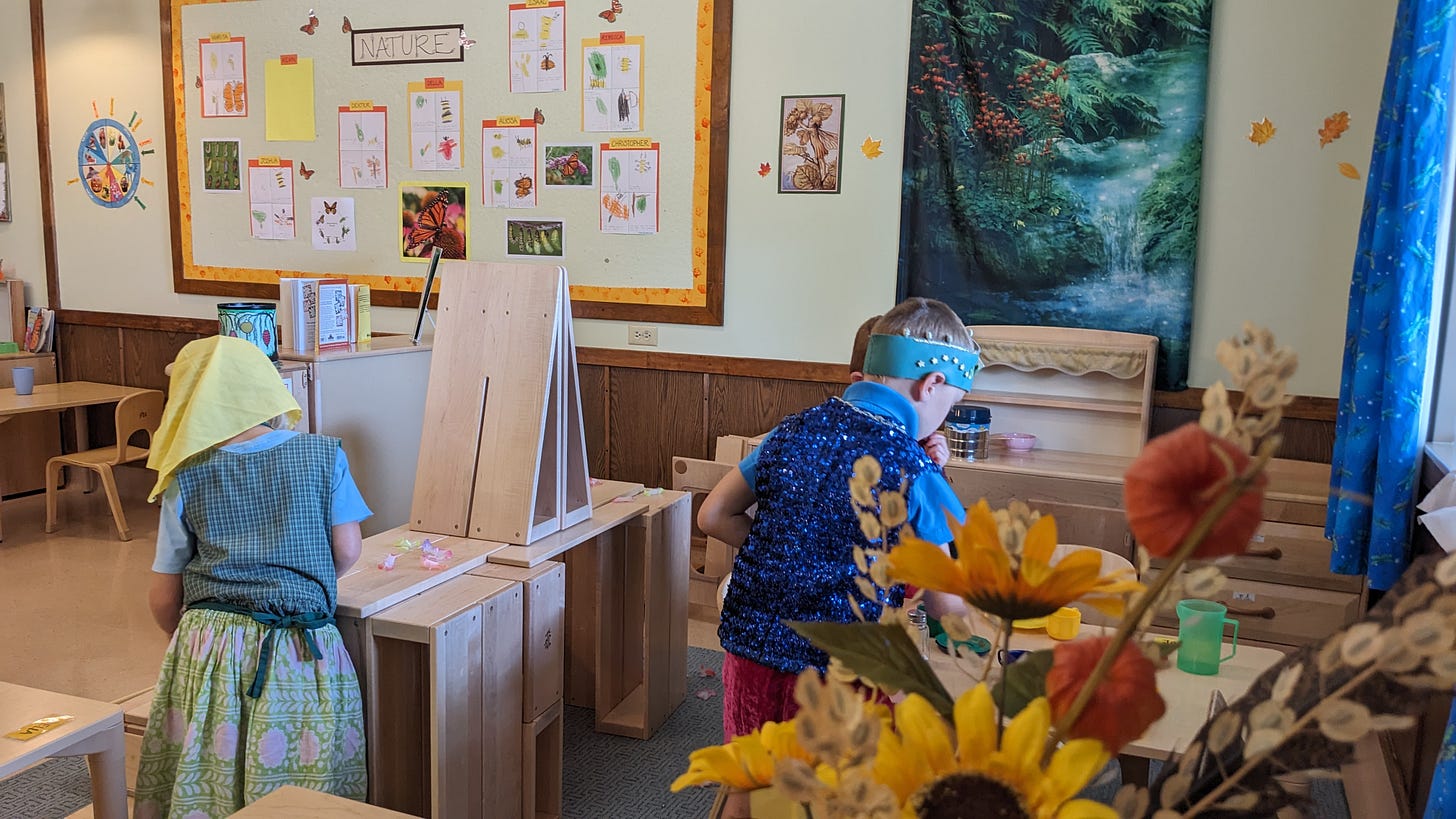
Now I work in a Bruderhof school where academics start in grade 1, when students are six years old. My job in the kindergarten is to prepare them for their future studies. The strongest foundation is play. A seasoned kindergarten teacher could write about it better, as I’ve only worked in other ages and summer programs so far. But this September I am an assistant teacher in the kindergarten, and I love it.
The main teacher prepared the room beautifully with desks grouped around the room giving the students individual space to work but still a friend to chat with. Desk skills are important and are introduced slowly during the year so that first grade won’t be such a rude surprise. Spilling beads all over the floor in kindergarten is a good way to learn elbow control (body awareness) thus preserving colored pencils from a worse fate in the upper grades.
Each child also has a designated space at the edge of the room where he or she goes twice a day. It’s chill time but it’s work at the same time: invention and imaginative are innate but can be practiced and enriched. Making patterns is a skill they will need for math. Concentration and focus are skills they will need for everything. So each child totes a game to their space, and I watch as structures spring up. Mini unit blocks are a favorite: these children will solve equations on paper one day, but for now, their hands are busy with cubes, rectangular and triangular prisms, cylinders, and more. They could probably tell you that two small blocks will work together if you run out of mediums and four smalls can replace a large (but only on walls not roofs). It will be easy to master the names of shapes “square”, “rectangle”, and “triangle.”
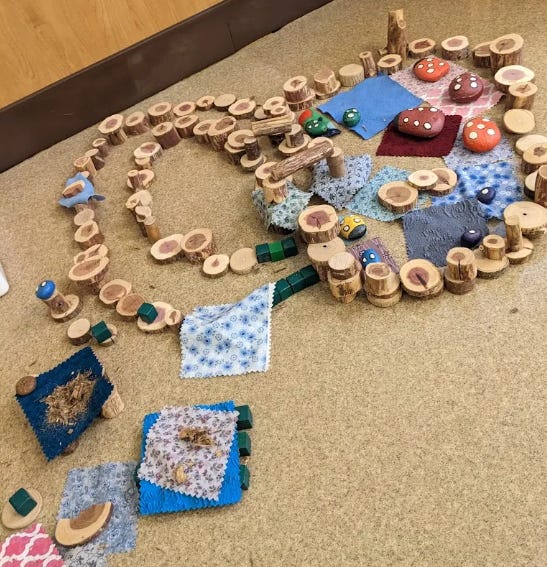
This is constructive play and as teachers, we encourage the children to build carefully. (Some tend to slap off a messy structure and jump up to choose a fun addition of decorative toys. Human nature I guess). But every child proves capable of true architecture. Beautiful palaces, bridges, hospitals, and towers reveal an innate appreciation for symmetry and order. Or, creativity results in “machines” with clear input and output, and sprawling zoos with unidentifiable but carefully placed “animals.”
Our kindergarten year will go by fast I have a feeling. September sees us outdoors more than in: looking for butterflies (we’re studying the monarch butterfly’s life cycle), playing in our “mud kitchen” in the woods, digging in the sandbox, building with outdoor blocks, and picking the last of summer’s vegetables from our garden. We burn a lot of energy with triking and scootering and usually there is a self-appointed little policeman shouting himself hoarse.
Come winter, unless we’re blessed with lots of snow to enjoy, we’ll be indoors doing free play in our drama, art, and block areas. (The art corner gets messy: creative young minds with an art cart of supplies at their disposal. There are no lines to color inside, just the limits of imagination.)
There’s so much to do to prepare our brains for academics. We have endless games and puzzles to keep our hands busy. We’ll take turns gazing at insects through a magnifying glass (that’s a coveted spot). We’ll peace-out with a picture book on the carpet. At “circle time” we’ll tailor sit and hear a chapter book or practice rhyming and phonics with children’s poetry and word games. When we need to move around we’ll slap our knees and flap our arms in time to Mozart. And every day we'll sing: fun songs, seasonal songs, action songs, and more.
And the alphabet? We’ll learn it, one letter per week. (We sing it already.) And letters and words will dance in our heads and swirl themselves into our play.
And, yes, my child, I promise you’ll learn something new every day.
Norann – in Danthonia, New South Wales, Australia
On Wednesday, 20th September, my first-grade teacher, Jennifer “Jennie” Harries, will celebrate her 92nd birthday.
There were ten of us in that class, and we all remember Jennie’s gentle and clear instructions, her high expectations of us, and her belief that, with work and perseverance, we could all reach our full potential. Beginning with the legends of Sir Arthur and the Knights of the Round Table, Jennie taught us the wonder of words without ever raising her voice. We thought then that she was just instructing us in reading and writing, but we know now that she was teaching us how to unlock the power of a story.
As we began our lives at school, the knights of the Round Table became our ultimate heroes: they were flawed human beings who were not scared of failure. They protected the weak, avoided the spotlight, were chivalrous in all circumstances, and stayed true to their calling.
I’ve been teaching English here at our Danthonia Home School Academy since 2009. While my classes are small, usually five or fewer students, the student’s energy is big and their stories are unique.
Each year brings a fresh mix of students: devout hunter and gatherer types, budding intellectuals and artists, sport enthusiasts, farmers, and future doctors. Most of them will say they “don’t like long books with big words”, but by the end of week one, when we’re steeped in the glories and gories of Beowulf, they are singing a different tune. Or rather, writing a different sentence. (We spend the year reading great books, reviewing grammar, writing well – many drafts! – and delving into contextual vocabulary).
What I cherish the most is the unique experience each student brings to the literature we study. As they encounter main characters, ponder central themes, and dissect narratives, they look at their own life-stories in fresh ways.
Because of this perspective, I never feel like I’m teaching the same books or plays or poetry. It’s a new adventure with each work.
Before we began Beowulf this year, I asked my students to formulate their thoughts around what a true hero is. With their permission, here is a minute sampling of what they wrote:
The ideal hero, in my mind, is not defined by bravery or capability, but the ability to see a situation of need and provide assistance.
A hero is a man or woman who is brave and skillful, but also compassionate; they aren’t arrogant, and they try to help people. They use their skill and bravery to fight evil and ultimately make the world a better place. They don’t make people feel small or insignificant, but rather lift them up.
My ideal hero is someone who isn’t necessarily super strong, fast, heroic, or smart, but is low-key and takes zero credit for helping people: they just go about their day doing good things for other people.
Being a hero requires loyalty and trustworthiness.
My ideal hero is an everyday person who embodies care and compassion and leads by example.
Reading their thoughts made me think of the people in my life, most of them teachers, who are true heroes from September to June every year, and often remain as guiding mentors throughout our lives.
And yes, there will be ten students calling or emailing a hero this week to say “Happy birthday, Jennie!” and “Thank you!”
What we’re enjoying
Trudi
I am enjoying sharing a bit of Korea with my kindergarten class. They surprised me with their eagerness to learn and absorb other cultures and languages. This week we ate some Korean food while I shared a few of my pictures and videos of a musical performance at Gyeongbokgung Palace in Seoul. I think I’ll be seeing some palaces and walled courtyards in the block corner. I’ve already heard kings, queens, servants, and guards sorting out their differences in the drama corner. After I played Korean children's songs a few times, little voices started singing along. And so we can’t help but learn a bit of Korean. . . .
Norann
I just received a copy of Lucy S. R. Austen’s Elisabeth Elliot: A Life. It looks amazing and I can’t wait to read it. Check out this review from the Gospel Coalition: “Learn to Love God with Elisabeth Elliott”
I’m also highly recommending a book edited by my former teacher, Jenny Harries, Water at the Roots: Poems and Insights of a Visionary Farmer by Philip Britts. It’s a book I’ve read and reread often as our Australian community embraced regenerative agriculture techniques to combat (or rather, work with) our dry ecosystem. I can only ever hear it in Jennie’s soft and steady voice.
Marianne
Jennie was my second grade teacher. I remember learning phonics and handwriting from her, but my favorite memory is of the poems, songs, and stories she taught us. Jennie made the world of heroes and angels and myth and fairy seem like it was just within reach. Adventure was just around the corner, and the giant would always be defeated. I second Norann’s recommendation of Water at the Roots.
Back to 2023: over the past few weeks our family has been harvesting the grapes from the small vineyard we tend. There are two varieties each of table and wine grapes, plus a row of concords. We picked the table grapes a few weeks ago and shared them with several dozen neighbor families. This weekend we picked the concords and wine grapes, which we stemmed and (creating a colossal mess in the process) turned into juice.

That’s all for this time! Enjoy the rest of September.
Trudi, Norann, and Marianne





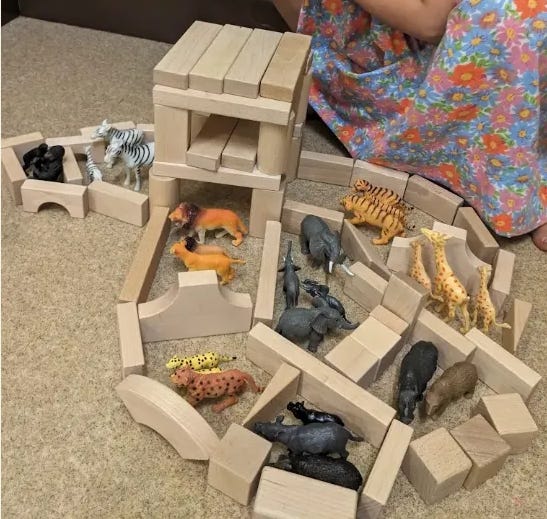
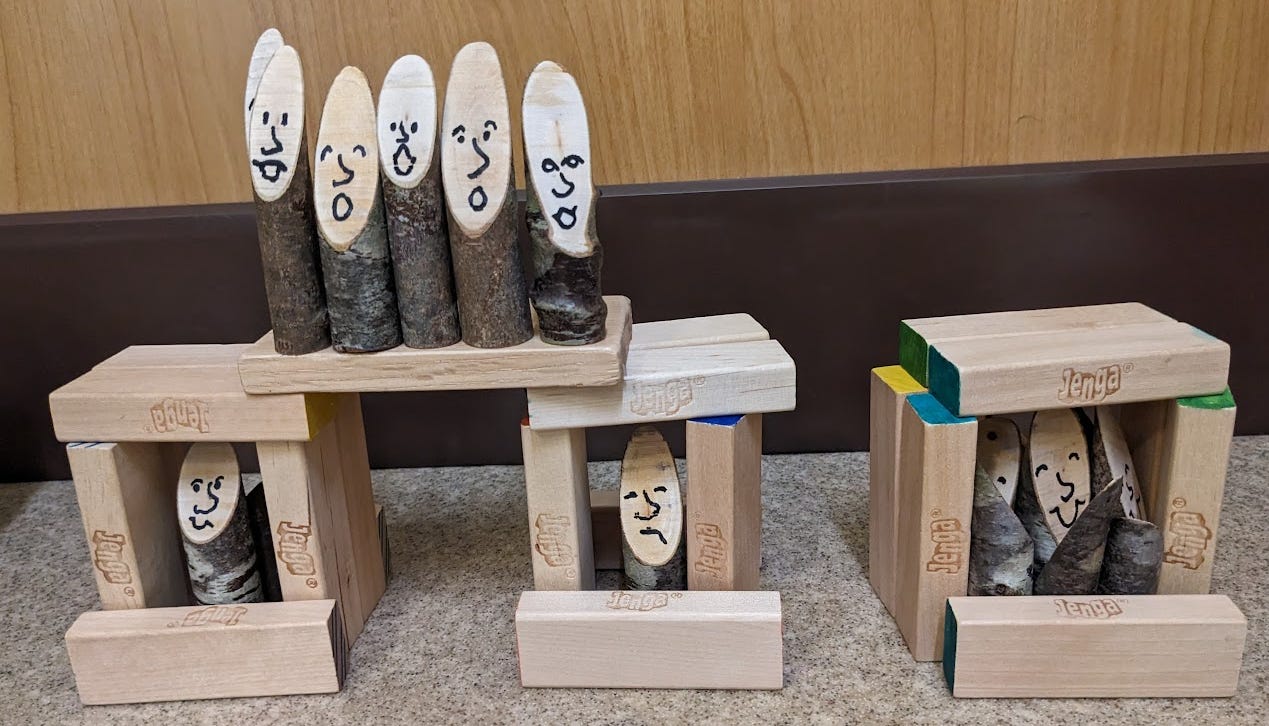
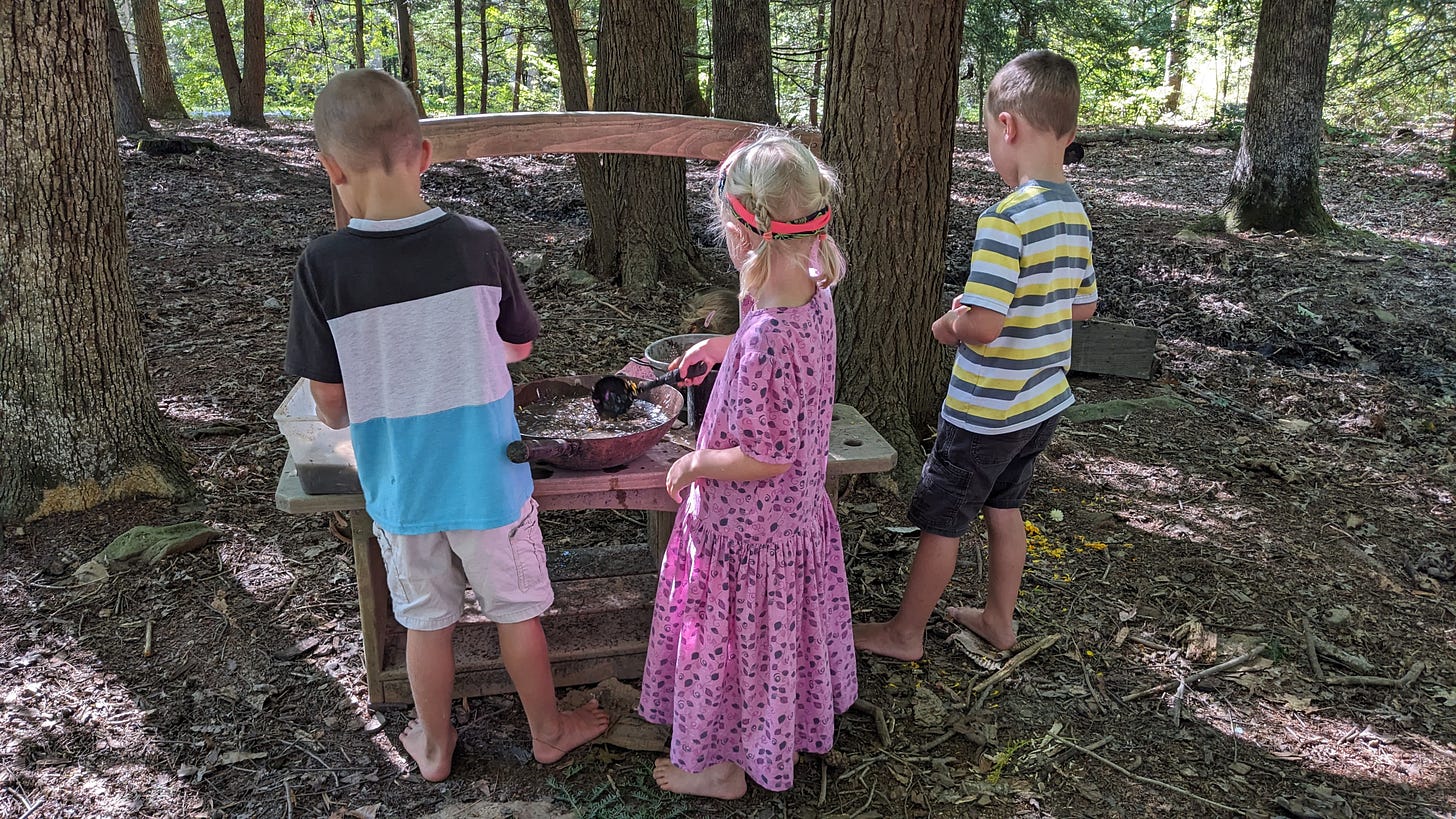
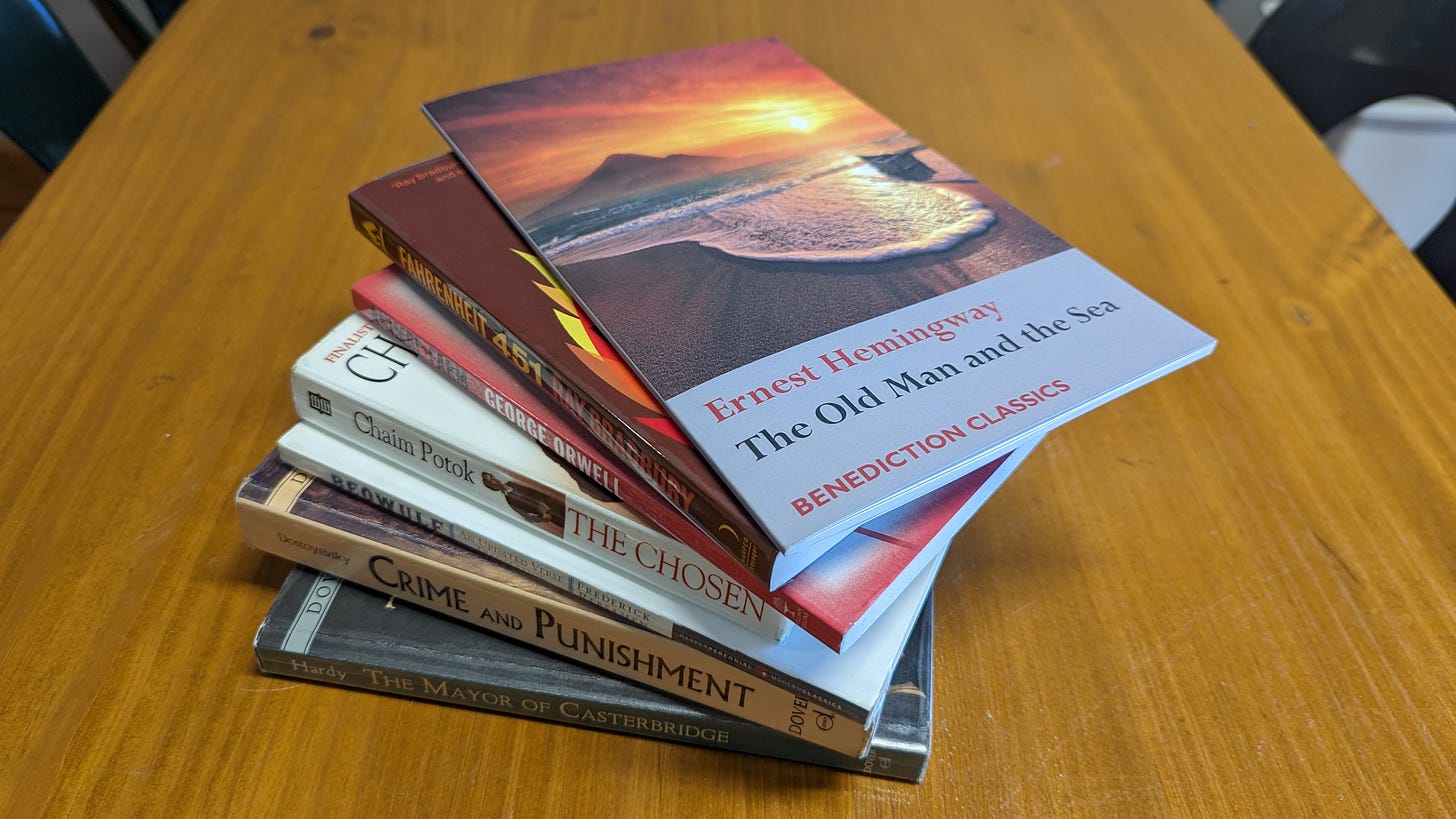
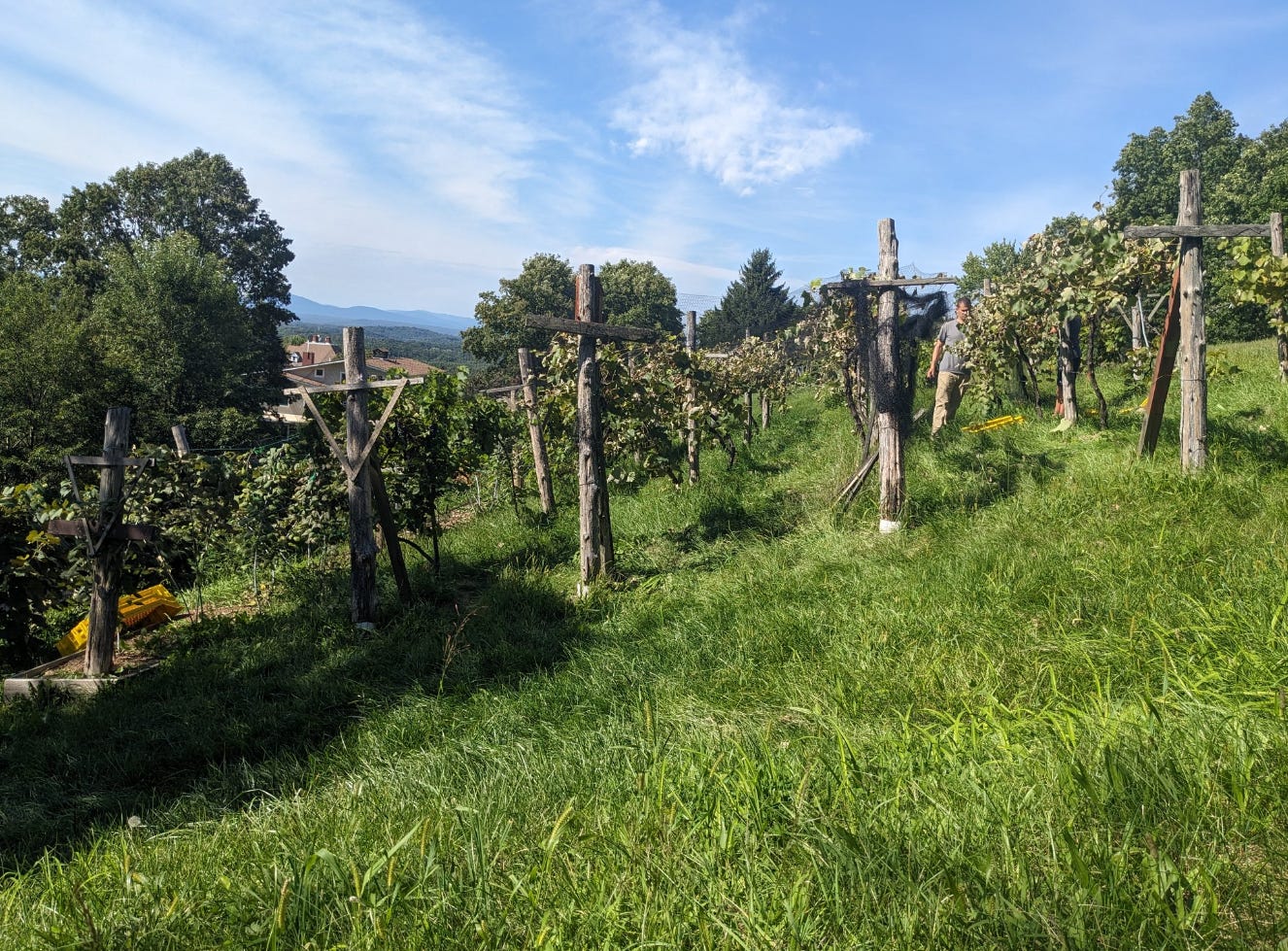
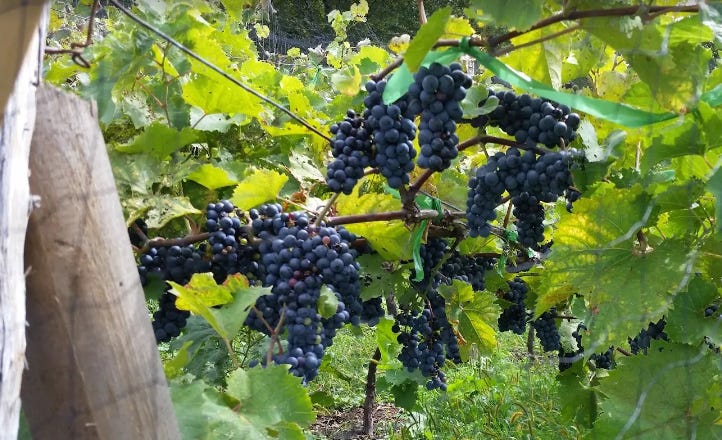
What a great idea to go for a walk with kindergarten before classroom work starts! School sounds wonderful at the Bruderhof! I think the secret is in seeing children as needing nurturing to become who God has made them to be, rather than needing to be molded into who we think they should be.